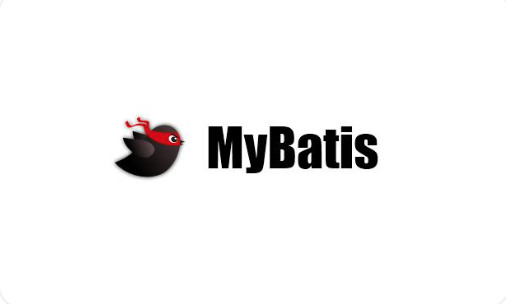Mybatis面试题(二)
MyBatis 面试题

11、Mybatis是如何将sql执行结果封装为目标对象并返回的?都有哪些映射形式?
第一种是使用标签,逐一定义数据库列名和对象属性名之间的映射关系。
第二种是使用 sql 列的别名功能,将列的别名书写为对象属性名。
有了列名与属性名的映射关系后,Mybatis 通过反射创建对象,同时使用反射给对象的属性逐一赋值并返回,那些找不到映射关系的属性,是无法完成赋值的。
12、如何执行批量插入?
首先,创建一个简单的 insert 语句:
<insert id="insertname">
insert into names (name) values (#{value})
</insert>
然后在 java 代码中像下面这样执行批处理插入:
list < string > names = new arraylist();
names.add(“fred”);
names.add(“barney”);
names.add(“betty”);
names.add(“wilma”);
// 注意这里 executortype.batch
sqlsession sqlsession =
sqlsessionfactory.opensession(executortype.batch);
try {
namemapper mapper = sqlsession.getmapper(namemapper.class);
for (string name: names) {
mapper.insertname(name);
}
sqlsession.commit();
} catch (Exception e) {
e.printStackTrace();
sqlSession.rollback();
throw e;
}
finally {
sqlsession.close();
}
13、如何获取自动生成的(主)键值?
insert 方法总是返回一个 int 值 ,这个值代表的是插入的行数。
如果采用自增长策略,自动生成的键值在 insert 方法执行完后可以被设置到传入的参数对象中。
示例:
<insert id=”insertname” usegeneratedkeys=”true” keyproperty=”id”>
insert into names (name) values (#{name})
</insert>
name name = new name();
name.setname(“fred”);
int rows = mapper.insertname(name);
// 完成后,id 已经被设置到对象中
system.out.println(“rows inserted = ” + rows);
system.out.println(“generated key value = ” + name.getid());
14、在 mapper 中如何传递多个参数?
1、第一种:
DAO 层的函数
public UserselectUser(String name,String area);
对应的 xml,#{0}代表接收的是 dao 层中的第一个参数,#{1}代表 dao 层中第二参数,更多参数一致往后加即可。
<select id="selectUser"resultMap="BaseResultMap">
select * fromuser_user_t
whereuser_name = #{0}
anduser_area=#{1}
</select>
2、第二种: 使用 @param 注解:
public interface usermapper {
user selectuser(@param(“username”) string
username,@param(“hashedpassword”) string hashedpassword);
}
然后,就可以在 xml 像下面这样使用(推荐封装为一个 map,作为单个参数传递给mapper):
<select id="selectuser" resulttype="user">
select id, username, hashedpassword
from some_table
where username = #{username}
and hashedpassword = #{hashedpassword}
</select>
3、第三种:多个参数封装成 map
try {
//映射文件的命名空间.SQL 片段的 ID,就可以调用对应的映射文件中的
SQL
//由于我们的参数超过了两个,而方法中只有一个 Object 参数收集,因此
我们使用 Map 集合来装载我们的参数
Map < String, Object > map = new HashMap();
map.put("start", start);
map.put("end", end);
return sqlSession.selectList("StudentID.pagination", map);
} catch (Exception e) {
e.printStackTrace();
sqlSession.rollback();
throw e;
} finally {
MybatisUtil.closeSqlSession();
}
15、Mybatis 动态 sql 有什么用?执行原理?有哪些动态 sql?
Mybatis 动态 sql 可以在 Xml 映射文件内,以标签的形式编写动态 sql,执行原理是根据表达式的值 完成逻辑判断并动态拼接 sql 的功能。
Mybatis 提供了 9 种动态 sql 标签:trim | where | set | foreach | if | choose| when | otherwise | bind。
16、Xml 映射文件中,除了常见的 select|insert|updae|delete标签之外,还有哪些标签?
、、、、,加上动态 sql 的 9 个标签,其中为 sql 片段标签,通过标签引入 sql 片段,为不支持自增的主键生成策略标签。
17、Mybatis 的 Xml 映射文件中,不同的 Xml 映射文件,id 是否可以重复?
不同的 Xml 映射文件,如果配置了 namespace,那么 id 可以重复;如果没有配置 namespace,那么 id 不能重复;
原因就是 namespace+id 是作为 Map<String, MapperStatement>的 key使用的,如果没有 namespace,就剩下 id,那么,id 重复会导致数据互相覆盖。
有了 namespace,自然 id 就可以重复,namespace 不同,namespace+id 自然也就不同。
18、为什么说 Mybatis 是半自动 ORM 映射工具?它与全自动的区别在哪里?
Hibernate 属于全自动 ORM 映射工具,使用 Hibernate 查询关联对象或者关联集合对象时,可以根据对象关系模型直接获取,所以它是全自动的。而 Mybatis在查询关联对象或关联集合对象时,需要手动编写 sql 来完成,所以,称之为半自动 ORM 映射工具。
19、 一对一、一对多的关联查询 ?
<mapper namespace="com.lcb.mapping.userMapper">
<!--association 一对一关联查询 -->
<select id="getClass" parameterType="int"
resultMap="ClassesResultMap">
select * from class c,teacher t where c.teacher_id=t.t_id and
c.c_id=#{id}
</select>
<resultMap type="com.lcb.user.Classes" id="ClassesResultMap">
<!-- 实体类的字段名和数据表的字段名映射 -->
<id property="id" column="c_id"/>
<result property="name" column="c_name"/>
<association property="teacher" javaType="com.lcb.user.Teacher">
<id property="id" column="t_id"/>
<result property="name" column="t_name"/>
</association>
</resultMap>
<!--collection 一对多关联查询 -->
<select id="getClass2" parameterType="int" resultMap="ClassesResultMap2">
select * from class c,teacher t,student s where c.teacher_id=t.t_id
and c.c_id=s.class_id and c.c_id=#{id}
</select>
<resultMap type="com.lcb.user.Classes" id="ClassesResultMap2">
<id property="id" column="c_id"/>
<result property="name" column="c_name"/>
<association property="teacher" javaType="com.lcb.user.Teacher">
<id property="id" column="t_id"/>
<result property="name" column="t_name"/>
</association>
<collection property="student" ofType="com.lcb.user.Student">
<id property="id" column="s_id"/>
<result property="name" column="s_name"/>
</collection>
</resultMap>
</mapper>
20、MyBatis 实现一对一有几种方式?具体怎么操作的?
有联合查询和嵌套查询,联合查询是几个表联合查询,只查询一次, 通过在resultMap 里面配置 association 节点配置一对一的类就可以完成;
嵌套查询是先查一个表,根据这个表里面的结果的 外键 id,去再另外一个表里面查询数据,也是通过 association 配置,但另外一个表的查询通过 select 属性配置。
本文来自互联网用户投稿,该文观点仅代表作者本人,不代表本站立场。本站仅提供信息存储空间服务,不拥有所有权,不承担相关法律责任。 如若内容造成侵权/违法违规/事实不符,请联系我的编程经验分享网邮箱:chenni525@qq.com进行投诉反馈,一经查实,立即删除!
- Python教程
- 深入理解 MySQL 中的 HAVING 关键字和聚合函数
- Qt之QChar编码(1)
- MyBatis入门基础篇
- 用Python脚本实现FFmpeg批量转换
- 什么是PHP的反射(Reflection)?
- 给矿机,预计到2024年将达到165亿美元
- 快速上手的AI工具-文心一言写小说
- CentOS+DHCP
- 线性表的查找 -- 顺序查找、折半查找、分块查找
- 无约束优化问题求解笔记(1)
- Go语言中的乐观锁与悲观锁
- 孩子写作业时的好搭档——书客Sun立式护眼台灯!
- TS在vue3中的初使用
- 捌[8],函数CreatePlanarUncalibDeformableModel/FindPlanarUncalibDeformableModel